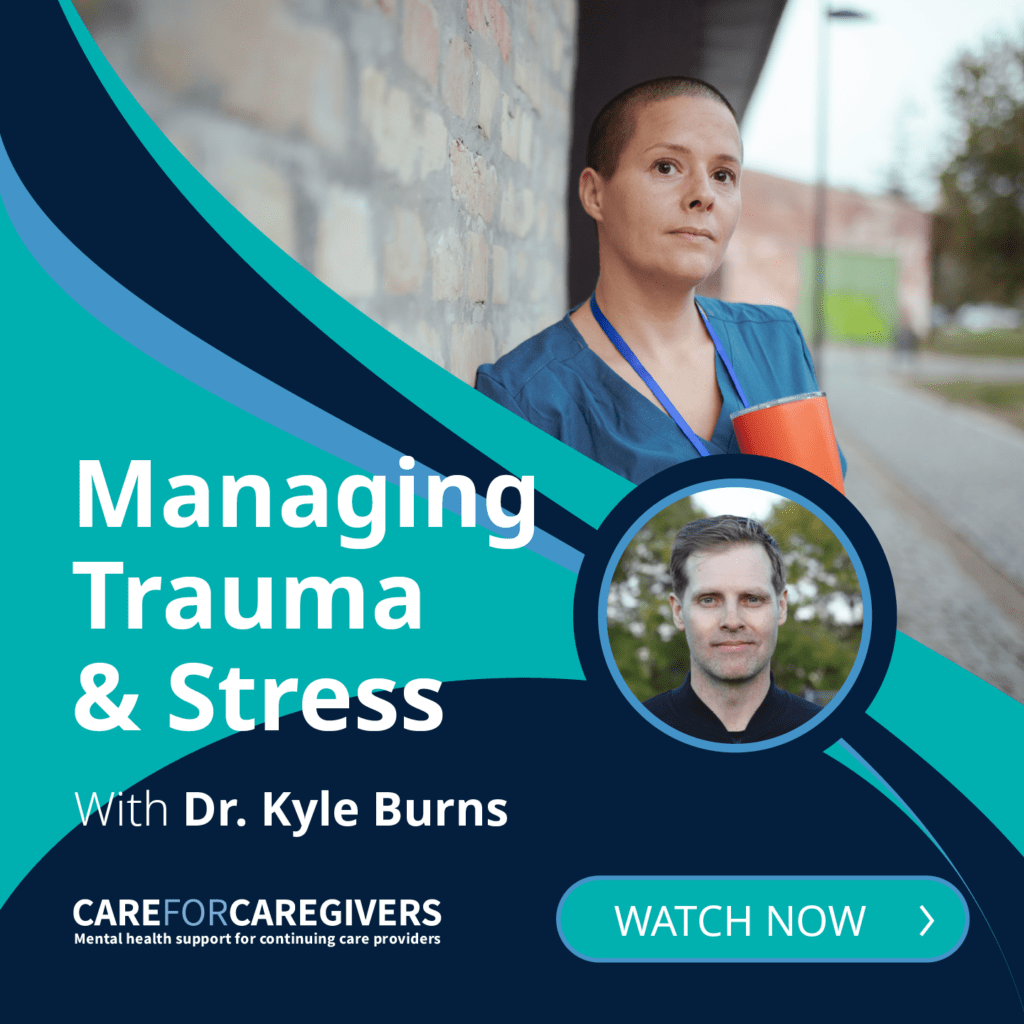Learn about the ways trauma and stress can impact healthcare professionals, and practice helpful coping strategies in this one-hour discussion about trauma and healthcare.Learn about the ways trauma and stress can impact healthcare professionals, and practice helpful coping strategies in this one-hour discussion about trauma and healthcare. Dr. Burns will discuss the different responses to extreme stress that can occur in healthcare, and related difficulties. Drawing from dialectical behaviour therapy he will also share practical strategies that people can use to manage trauma-related symptoms, and the role of mindfulness and acceptance in enacting longer-term change.
Learning Outcomes:
- Understand the different ways we define trauma and how that can impact those who are experiencing trauma/stress-related difficulties.
- Learn about the different responses to trauma or stress
- Understand how healthcare professionals may be predisposed to stress responses
- Identify some coping strategies that can worsen trauma-related symptoms
- Practice and learn some practical strategies to manage symptoms
- Discuss other resources one can consider accessing
Our presenter
 Kyle Burns Kyle Burns is a psychiatrist practicing in Vancouver British Columbia. He teaches dialectical behaviour therapy and cognitive behavioural therapy in the Department of Psychiatry at the University of British Columbia. He is the co-founder of VanPsych a clinic that provides evidence based mental health treatments. He is currently the chair of the board of directors at Anxiety Canada.
Kyle Burns Kyle Burns is a psychiatrist practicing in Vancouver British Columbia. He teaches dialectical behaviour therapy and cognitive behavioural therapy in the Department of Psychiatry at the University of British Columbia. He is the co-founder of VanPsych a clinic that provides evidence based mental health treatments. He is currently the chair of the board of directors at Anxiety Canada.



